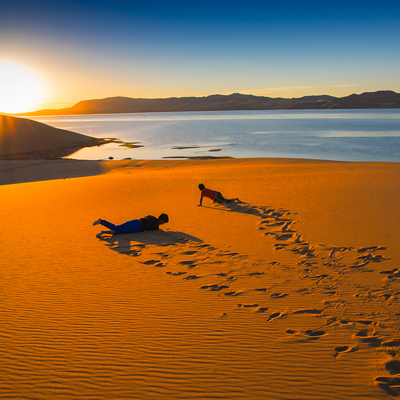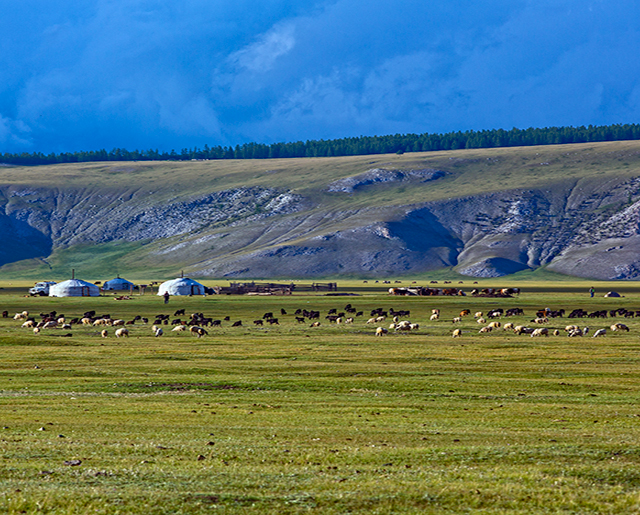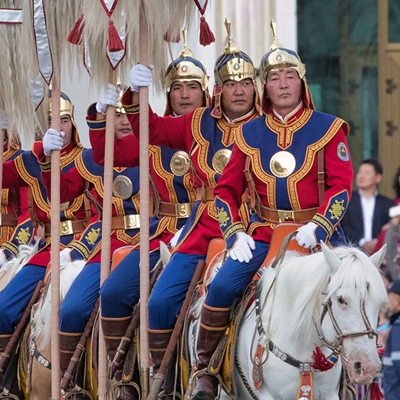
Traveler and Photographer Took Photo Journey Through the Gobi of Mongolia
Explore incredible images of Mongolian Gobi desert. Photographer Batzaya Choijiljav traveled to Mongolian Gobi and took stunning pictures of this exotic desert. From Prehistoric dinosaur fossil sites to Centuries old Mongolian nomadic culture, from great desert adventures to pleasant leisure activities, from stunning desert landscapes to local camel herders are captured on his camera. You may imagine Mongolian Gobi that it is just an empty, dry and warm desert. But after seeing these photos, your thought would absolutely be changed.
Mongolian Gobi - Home to Prehistoric Remains
The Gobi desert of Mongolia is one of the hottest spots for World’s historical, archeological and paleontological research. The Gobi Desert was unknown to the world until Marco Polo’s travel in the 13th century. Many other explorers followed Polo's journey and traveled through the Gobi Desert such as Roy Chapman Andrew’s expedition. Their most impressive discovery was the first ever scientifically recognized dinosaur eggs in the world. The eggs, pictured left, were found at an incredibly dense fossil site called Flaming Cliffs in Southern Mongolia.

Photo from www.roychapmanandrewssociety.org
Scenic and Exotic Desert of Mongolia
The Gobi is an iconic destination for landscape, wildlife and night sky photography. Contrasting colors of rugged mountains, sand dunes, green oasis, mystic mirages are not only the photographic objects but also the Gobi is a land of roaming camels, gazelles, and endangered wild animals – it makes the Gobi the most exotic desert on earth. Now, let’s enjoy some beautiful sceneries of the South Gobi of Mongolia taken by Mongolian photographer.

Mongolia has three types of deserts, and some of it has enough grass for livestock to graze.

Khermen Tsav, “The end of the World” named by Roy Chapman Andrews. Spectacular rock formations where the first dinosaur skeleton was found, locate in North West of Omno-Gobi province.

Domestic Bactrian camel has been one of the most important animals for steppe nomads since it had domesticated in 2500BC. Also, there are Wild Bactrian Camels, called ‘Khavtgai’ are survived and still roaming through Mongolian Gobi desert.

Mongolian arid deserts and steppe ecosystems provide homes for Mongolia's varied reptiles and other forms of wildlife.
Camel Herding Nomads of Mongolian Gobi
He captured not only the landscape and natural beauty of the Gobi. He photographs traditional nomadic lifestyle, people and culture along with the spectacular nature.
The camel-herding nomads - truly live a rugged existence, living off the land and relying on Mother Nature to provide. Their lives are unbelievably simple. Mongolian nomadic people have minimal possessions and only take from the land and the livestock what they need when they need it. They are also known as the most hospitable people on earth and it is easily seen when you enter their dwelling / Ger/.

They are very warm and friendly after entering their ger they kindly welcome you and offer milk tea with whatever they have.

Simple nomadic dwelling Ger -easy to break down and easy to erect and warm in winter, cool in summer. Mongolian nomads have been moving with their Gers and living like this way for thousands of years. And the Ger has developed and changed very little for centuries.


The Mongolian Gobi should be your next Adventure
Considering Mongolia to travel or creating your bucket list and looking for a unique place to add on, then the Mongolian Gobi should be your next adventure. The Gobi is a place of beauty, mystery, culture, and wonder that captivates adventurers all around the World. Travelers and photographers are coming for its stunning scenery, mystic historical remains, authentic nomads, their traditions and magnificent wildlife even the terrain is barren and the weather is extreme. Take a look around what travelers do in the Gobi.

Southern Gobi is the least populated region of Mongolia, lack of paved roads, mostly less discovered huge land- means that this desert is the true destination for overland adventurers.

Climbing sand dune is one of the must try activities in the gobi. The best place to climb is Khongor Sand Dunes, 6-12 km (3.7-7.5 mi) wide, 180 km (110 mi) long and rising to a height of 80 m (260 ft) and the highest point is at 300 m (980 ft). Challenge yourself.

Don't miss to visit the magnificent "Yol Valley" in Gobi Gurvan Saikhan National Park, home to endangered species of mammals, birds and reptiles. Walking through the dramatic gorges along with colorful flowers, rocky outcrops and deep ice field that forms in winter and remains well into summer.

Riding bacterian camels is also must try activity in the Gobi. Local camel herding hosts offer to use comfortable hand-made saddles for riding, which sit between the two- humps of the camels.

Khongor Sand Dunes- The true destination for challengers, climbers, photographers and bikers too.
Without doubt, visiting local family is the best way to experience nomadic culture
Spending time in Mongolian gobi and capturing the true spirit of the nomadic country and its camera-shy people. It’s a true journey that requires instinct, courage and the immerse into the unknown. I hope you have found your inspiration to add Mongolian Gobi Desert to your bucket list.
All photos created and owned by Batzaya Choijiljav at www.toursmongolia.com
To follow him on Instagram, Twitter, and Facebook.
Share this article to your friends and family










.jpg)









_BLOG.jpg)
























